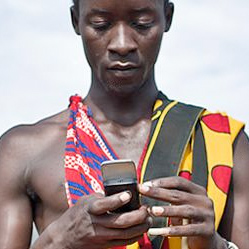Many places in Southern and East Africa rely on paper-based systems for surveillance of infectious diseases. Such systems place limits on rapid and reliable transfer of data and therefore hinder effective surveillance and slow down detection and response. Following the successful implementation of a project piloting the use of mobile technologies for disease surveillance, the South African Centre for Infectious Disease Surveillance (SACIDS) and the East African Integrated Disease Surveillance Network (EAIDSNet) worked to establish a cross-national mobile phone system encompassing six border countries in East and South Africa.



